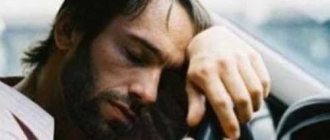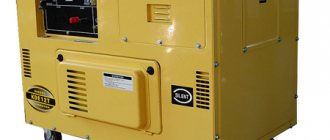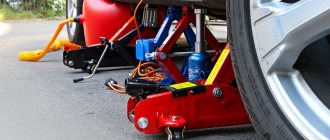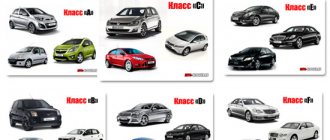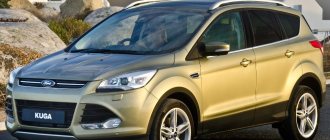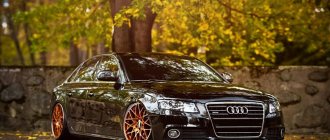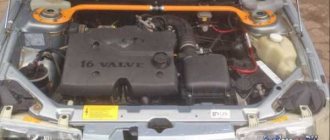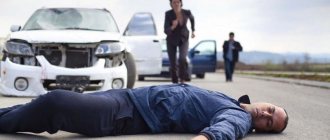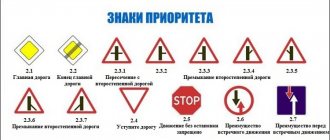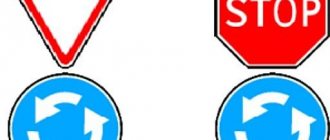So, we know that driving while intoxicated is bad. But at the same time, we think little or don’t think at all about the fact that in addition to alcohol, there are other substances that it is better for a driver not to use while driving. These are a certain kind of medications, which we will talk about now.
These drugs can be divided into three categories:
- indicating the presence of alcohol as a result of testing by traffic police officers, but not containing alcohol;
- containing alcohol, which is detected by breathalyzers;
- do not contain alcohol, but at the same time worsen the physical condition of the driver, which may result in a dangerous situation on the road.
You need to know about these types of medications in order to prevent possible traffic police, and also to avoid misunderstandings with traffic police officers.
We also recommend that you read
Roewe RX8: new frame SUV from China
NIO ES8: new seven-seat electric cross from China
Soueast DX3 SRG: a new sports version of the SUV
Reading the instructions for medications
It must be said that ethyl alcohol, which is a strong psychoactive substance, is found not only in alcoholic beverages, but also in many medicines that have nothing to do with strong drinks.
By the way, the instructions for such drugs always prohibit their use while driving, but, alas, we do not always find time to read these instructions.
Trusting a driver’s own feelings after taking such medications is also undesirable and even dangerous: it has long been experimentally proven that the driver’s self-assessment of his condition differs significantly from the test results.
Therefore, it is still necessary to familiarize yourself with the instructions for the medications you are taking, because recently the state has tightened liability for road accidents committed while intoxicated.
But, as already mentioned, the instructions may not always be in front of your eyes. In addition, the same drug today may show the presence of alcohol content during testing, but tomorrow it may not show it, which sometimes lulls the vigilance of drivers.
74-70-69
PROHIBITED DRUGS FOR DRIVERS
Everyone knows that drivers should never drink alcohol. But some tablets are also prohibited due to the presence of elements in their composition that can affect the ability to drive a car. Special medications can even cause a breathalyzer to show the presence of alcohol in the blood. The list of drugs prohibited for drivers and the reasons for their prohibition is the topic of today’s article.
LIST OF REMEDIES
Firstly, some of the tablets reduce concentration and inhibit neurophysiological reactions, which increases the risk of getting into an accident. Secondly, some drugs may contain alcohol, which, after checking the driver by traffic police officers or a medical examination, will result in deprivation of the right to drive vehicles or a criminal case. Thirdly, certain medications cause side symptoms that are dangerous for proper driving: dizziness, decreased visual acuity, hallucinations, decreased blood pressure, which can lead to fainting, etc.
List of medications that should be taken with caution:
antidepressants; sleeping pills; tranquilizers; medicines for diarrhea; cold medicines; many pain medications; antihistamines (for allergies); neuroleptics.
It is also worth understanding that eye drops for redness or fatigue should only be used at home, preferably at night. Instillation immediately before driving a car can have a bad effect on vision, which can also lead to an accident.
Medicines prohibited while driving due to decreased attention
It is worth paying attention to the fact that almost all medications have some side effects. Even ordinary “Suprastin” or “Tavegil” have an effect on a person’s condition, causing drowsiness and, accordingly, slowing down the speed of reactions to changed circumstances, so it is recommended to take drugs of this kind only at night. For the same reason, you should not take fever medicines such as Fervex, Theraflu and others like them. However, if a person has a high temperature (and such drugs should be taken when the body temperature is above 38-38.5°), then you should not drive at all, even after drinking the medicine.
It is especially important to note that the driver, no matter what his emotional state, should not take antipsychotics and antidepressants, because Although they improve the condition in case of depression or nervous tension, they greatly inhibit a person’s reaction and perception of the surrounding world. In this regard, even ordinary sedatives like Novopassit or Tenoten are dangerous, because they can cause dizziness or drowsiness, which is not good for the driver on the road. The same applies to sleeping pills that a person takes on an ongoing basis. In addition, they have a cumulative effect and can have a significant impact on the driver’s condition.
The list of medications in the following paragraph applies to male drivers. They should pay attention to the fact that drugs “for male strength can not only reduce attention, but also temporarily impair visual functions, which are the most important for the driver. Therefore, you should follow the indicated dosage and regimen, and also try not to use them immediately before getting behind the wheel of a car.
PAINKILLERS
Another important point is anesthesia and anesthesia. Even a seemingly harmless anesthesia administered by a dentist or other doctor for an analgesic effect somehow affects our nervous system and slows down over the next 12 hours the speed of neurophysiological reactions to surrounding circumstances, a sudden change in which while driving threatens to get into an accident.
Gastritis and other diseases of the gastrointestinal tract are now not uncommon; they occur in almost every second person. And some pills for diarrhea or pain can negatively affect the driver's attention.
A special category of people who should monitor their medication intake are diabetics. They should always check their blood sugar levels before traveling so they can take insulin if necessary. Otherwise, a sharp decrease in sugar levels can lead to loss of consciousness and a serious accident.
Any painkillers, as well as anesthesia, lead to a decrease in attention and inhibition of a person’s reactions, although this is not noticeable. But if emergency braking or avoiding a collision on the road becomes necessary, the driver may not be able to do it quickly enough. Therefore, conditions accompanied by headaches, joints, spastic or other pains are best endured as a passenger or even a homebody.
DRUGS THAT INCREASE BLOOD ALCOHOL LEVELS
Of the widely used medications, there are not so many such drugs, but they are still found in almost every first aid kit. Many people take them without even knowing the consequences for their driving license. List of medications that cause a “false” alarm in the breathalyzer, because they belong to the category “alcohol-containing”:
Inhalipt (aerosol used to treat throat diseases).
Bittner syrup.
Licorice root syrup (for cough).
Valocordin, Valoserdin, Corvalol (heart medications).
Aflubin (antiviral, immunostimulating agent).
Medical tinctures, for example, Motherwort, Valerian, Hawthorn, etc.
Levomycetin (antibacterial drug).
Novocaine (local anesthetic).
Medicines that are prohibited in the Russian Federation
There is a group of medications that cannot be taken not only before getting behind the wheel of a car, because they are completely prohibited in Russia, and their presence can cause problems with the law, not to mention problems with driving. A list of such drugs can be found on the Internet upon request: Resolution of the Government of the Russian Federation “On approval of the list of narcotic drugs, psychotropic substances and their precursors subject to control in the Russian Federation.”
How to understand what exactly should not be taken
The very first rule that drivers must follow when taking any medications is to read the “Special Instructions” column in the instructions for the drug. It states whether the medication affects the ability to drive a car, and what symptoms accompany taking the drug. These instructions should not be ignored under any circumstances, because... You can lose not only your license, but also your life if you get behind the wheel and cause an accident.
Why does a breathalyzer indicate alcohol?
Some components of medications are capable of exhibiting a reaction that the devices of traffic police officers can record as alcoholic. Experienced car enthusiasts probably remember the times when they had to blow into a special tube. And this tube did not always work objectively. A certain type of pill could indicate alcohol, but the person being tested, meanwhile, did not drink alcohol.
Now the technical equipment of traffic police officers has noticeably improved, but it is still far from an absolute idyll. Even the most modern electronic devices are not immune to errors, and therefore there is a list of medications that can indicate alcohol.
So, now we will list those medications that will not cause any particular harm to the driver’s health, but can still create problems with traffic police officers.
What punishments can there be?
You can't rely on your own feelings. You need to think ahead - the condition can worsen at the most inopportune moment. And besides this, the test during the medical examination will be positive. The law provides for strict punishment for intoxication, and it is almost impossible to prove your case in this case.
These are well-known cough, cold and painkillers, which many of us take and drive without thinking about the consequences.
Andipal
(pain reliever – headache, migraine)
| Pills | 1 table |
| analgin | 0.25 g |
| dibazole | 0.02 g |
| phenobarbital | 0.02 g |
| papaverine hydrochloride | 0.02 g |
| excipients: starch; talc; stearic acid - sufficient quantity to obtain a tablet weighing 0.37 g |
Nurofen Plus
(pain reliever)
| Film-coated tablets | 1 table |
| ibuprofen | 200 mg |
| codeine (as codeine phosphate hemihydrate) | 10 mg |
| excipients: MCC; sodium starch glycolate; hypromellose; pregelatinized corn starch; Opasprey M-1-7111B; talc |
Codelac
(cough remedy)
| Film-coated tablets | 1 table |
| codeine | 0.008 g |
| thermopsis herbs powder | 0.02 g |
| sodium bicarbonate | 0.2 g |
| licorice root powder | 0.2 g |
Corvalol
(sedative and vasodilator)
| Drops for oral administration | 100 ml |
| alpha-bromoisovaleric acid ethyl ester | 2 g |
| phenobarbital | 1.826 g |
| ethyl alcohol 95% | 79 ml |
| excipients: sodium hydroxide; peppermint oil; purified water |
Pentalgin
(pain reliever)
| Film-coated tablets | 1 table |
| amidopyrine | 300 mg |
| analgin | 300 mg |
| codeine | 10 mg |
| caffeine sodium benzoate | 50 mg |
| phenobarbital | 10 mg |
Codterpin
(cough medicine)
| Film-coated tablets | 1 table |
| codeine | 15 mg |
| sodium bicarbonate | 250 mg |
| terpinhydrate | 250 mg |
Medicines that indicate alcohol when tested
Novocain . In most cases, it can indicate alcohol, so it is better not to use this drug while driving. Levomycetin . Quite often it provokes false readings from alcohol testing devices. Pertussin . Contains thyme extract and potassium bromide, which may indicate the false presence of alcohol. Etop . In some people with a certain body constitution, this drug may indicate alcohol. You are unlikely to be able to determine in advance whether you are one of these people or not. Therefore, it is better not to take risks. Microcide . A medicine intended for the gastrointestinal tract. May cause appliances to react as if they were drinking alcohol.
Now let’s look at medicines that actually contain alcohol, that is, ethyl alcohol.
Drug Safety Tips
- Do not drive a car if you read in the instructions that the medicine you recently took is an antipsychotic, sedative, hypnotic or contains lithium. They all affect the psyche.
- Barbiturates and benzodiazepines are substances that cause hypnotic and sedative effects.
- Beware of blood pressure medications. Especially with the so-called central action. They can cause significant inhibition.
- Specialists pay special attention to beta-blockers. These are pharmacological drugs that affect the rate and strength of heart contractions and can cause drowsiness. And antiallergic drugs in rare cases cause the same effect.
Drowsiness is an effect that many medications have
Products containing alcohol
Iodine and iodine solution. It is an alcohol solution. Medical antiseptic methanol solution. Essentially it is slightly diluted ethyl alcohol.
Ethanol. Pure medical ethanol. It should not be in the driver's blood.
Soapy alcohol. Contains 100 parts soap and 95 parts alcohol.
Saledez. Alcohol based antibiotic for external use.
We also recommend that you read
Hower H3 and H5 frame SUVs will be available in Russia this year
Taking exams by a driving school without the traffic police: a new initiative of the Guild of Driving Schools
Frame SUV Foton Sauvana: price and configurations in Russia
Pihtanol. Alcohol-containing product for external use. When taken orally, it will definitely show the effects of alcohol.
Salesept. An antiseptic containing alcohol.
Sintomycin with novocaine. An antiseptic drug containing novocaine and ethanol.
Aerodesin 2000 . An antiseptic containing alcohol.
Biovital liquid. It is an alcohol extract of hawthorn berries. It is not advisable to use it before a trip, otherwise you will get into trouble with traffic police officers.
Lymphimyosot. Homeopathic medicine. Has 35% alcohol.
Bittner. Alcohol tincture containing from 30% to 40% alcohol.
Inhalipt. Aerosol can with a volume of 30 ml. It contains only 1.8 ml of ethyl alcohol, but this is quite enough for the corresponding breathalyzer reading.
Gutron. Drops for internal use. It is better not to use while driving: 30 drops contain 120 mg of alcohol.
Canephron N. Drops consisting of a variety of components, one of which is ethyl alcohol.
Renital . Nasal preparation containing ethanol.
Psorhinochel. A medicine that is 35 percent alcohol.
Gutron. Drops consisting of sodium cyclamate, midodrine hydrochloride, water and 96% ethanol.
Vertigohel. Product containing ethanol.
Edas-101. Drops containing alcohol up to 30%.
Aflubin. Includes 43% ethyl alcohol.
Asinis. Drops containing 43% alcohol by weight.
Venza. A drug containing 43% alcohol.
Voqara. A medicine that contains 43% alcohol by weight.
Gentos. Drops containing 43% alcohol.
Levovinisol. An anti-inflammatory drug to which ethanol is added.
Licorice root syrup. One tenth of this drug consists of 96 percent alcohol.
Pansoral. Antiseptic substance with 36% alcohol.
Valocordin. Drops consisting of phenobarbitalom and alcohol.
Barboval. Phenobarbitalone-based medicine containing alcohol.
Valoserdin . Consists of phenobarbital and alcohol.
Corvalol. Alcohol-based heart medication.
Pharmacy tinctures. You need to know that the vast majority of such tinctures are prepared with alcohol: valerian, hawthorn, motherwort, red pepper, etc.
Next, we will consider medications to which traffic police officers will not show the slightest attention, because they will not indicate alcohol. But, nevertheless, drugs from this list should never be used while driving, because they can negatively affect the driver’s well-being and thereby make it difficult to drive.
Approximate list of drugs prohibited for drivers
You can buy Corvalol at any pharmacy. Some citizens take this drug as a sedative. But after use, the substance phenobarbital remains in the body. It's on the "psychotropic" list. Phenobarbital cannot be purchased in its pure form, but it can be used in the production of drugs. This substance is present in 200 medications.
In almost all cases, these are painkillers. Phenobarbital is eliminated from the body naturally after three days. And if the driver took 20 drops of Corvalol on the eve of the trip, then in the morning the substance will still be present in his blood. Any analysis will show this. The level of the substance does not matter.
If the driver’s tests show the presence of narcotic or psychotropic substances in his body, then he will bear administrative liability under Art. 12.8 Code of Administrative Offenses of the Russian Federation.
Thus, a driver who took 20 drops of Corvalol in the evening may be deprived of his license for 2 years the next day.
There are only some concessions regarding alcohol.
• 0.16 mg/l in exhaled air;
• 0.3 g/l in blood.
https://www.youtube.com/watch?v=cMWT7nMbd6g
To avoid getting into an unpleasant situation, it is better for the driver not to take alcohol-containing drugs at all, or to refrain from driving. It is worth remembering that some foods, such as kefir, contain small amounts of alcohol. In addition, we must not forget about the error of the measuring device.
1. antihistamines: Claritin, Suprastin, Tavegil and others;
2. painkillers: Pentalgin, Spazmalgon, Solpadain, Tempalgin and others;
3. neuroleptics: Frenolone; Aminazine, Haloperidol, Tizercin and others;
4. medications for the treatment of the gastrointestinal tract: Gastril, Piren, Gastrotsepin and others;
5. medications to lower blood pressure: Atenolan, Adelfan, Sinoprex, Tenormil, Kristepin, Brinerdine and others;
6. medicines for the treatment of colds: Coldrex, Theraflu, Fervex and others;
7. tranquilizers and nootropics: Phenibut, Pantogam, Tazepam, Elenium and others.
The drugs listed are not a complete list. The exhaustive list is much wider. Therefore, before taking a medicine, you need to inquire about its compatibility with driving a vehicle.
List of medications that worsen the physical condition of the driver
Neupeptyl. Mental stimulation pills. May cause nausea, headache, loss of appetite, dizziness, dysphoria, chills, anxiety and psychosis.
Radedrom. Anti-vomiting agent. It is not advisable to use it while driving, otherwise it can cause dizziness, headaches, as well as feelings of fear and fatigue.
Diphenhydramine. A drug with a known hypnotic effect. There is nothing worse for a driver than falling asleep while driving, so if necessary, refrain from taking this drug.
Brinerdine. Medicine to lower blood pressure. Cannot be used while driving - it reduces the driver's response.
Phenamine. Taking this drug provokes impaired attention and nervousness. It is unsafe to take while driving.
Sinoprex. Depresses the driver's reaction.
Raunatin. Has an inhibitory effect on the central nervous system.
Kristepin. Pressure lowering agent. However, at the same time it also reduces the speed of response.
Clonidine. It can be used as a sedative, but it also slows down the speed of mental and physical reactions.
Atenolol. May cause dizziness and general confusion.
Meridil. The drug has side effects that reduce the degree of reaction and deprive the driver of the ability to concentrate as much as possible on driving.
Pervitin. Contains methamphetamine, a fairly strong drug whose effects can be unpredictable.
Atropine. Provokes disorientation and dizziness.
Hemiton. May cause inadequate perception of the surrounding world.
Bisogamma. Taking this medication may cause confusion and migraine attacks.
Iprazole Lowers blood pressure, but may cause seizures.
Tenormin . Also causes confusion and dizziness.
Pipradrol. Medicine to combat hypertension. Its side effects reduce the ability to drive the car.
Clonidine. It has a sedative effect, which makes it impossible to drive safely.
Atenolan. Causes dizziness, absent-mindedness, decreased attention.
Imizin. Taking this medicine causes drowsiness and sometimes migraines. As a result of side effects, anxiety, psychomotor agitation, and a tendency to aggression may appear.
Catapresan. Causes a state of depression. This tool cannot be used when performing actions that require quick reactions. It is prohibited to drink while driving.
Scopamine. It serves as an enhancer of the effects of many medications, but at the same time causes headache, dizziness, photophobia, drowsiness, and impaired attention.
Pentalgin. After using this remedy, weakness and drowsiness may occur.
Relanium. A drug from the group of psychoactive substances. Its side effects are incompatible with driving.
Elenium. A medicine with a fairly strong sedative effect. Its use leads to decreased attention and impaired reaction speed.
Etaperazine. Sedative. Thanks to it, coordination of movements can suffer.
Majeptyl. A powerful medicine used for psychosis. Has a strong effect on the central nervous system.
Spasmoveralgin. Promotes vision impairment and provokes addiction.
Kaffetin. An average dose of medication leads to overexcitation. With large doses, lethargy appears.
Seduxen. Psychoactive drug. May cause muscle weakness and dizziness.
Tizercin. This drug inhibits reactions and many other qualities necessary for driving.
Solpadeine. This medicine contains codeine, which is prohibited as a narcotic substance.
Chloracesin. A powerful antidepressant. It often has opposite effects: in medium doses it acts as a sedative, but in large or small doses it can act as a stimulant.
Migrenol. Causes lethargy and weakness, has a depressing effect on the reaction.
What medications fall into the risk category?
Medications that are not recommended for drivers interfere with quickly reacting and managing the situation on the road. Such tablets are also not recommended for use before active physical and mental stress. The prohibited category includes substances that affect:
- attention and speed of response;
- muscle tone;
- coordination of movements;
- nervous system;
- general human activity.
The main prohibited medications include sleeping pills, which promote rapid sleep, which, in turn, entails an accident. Even small doses of them can cause unusual driver behavior because they function like a drug in the body.
Also prohibited are anti-pain medications that do not significantly affect the perception of the outside world, but reduce the speed of reaction.
Medicines prohibited while driving are often included in the list that are taken for a common cold. They contain components that have a detrimental effect on perception and reduce reaction.
By using certain drugs, you risk your safety and the safety of others
Is it possible to drive after taking dietary supplements?
As it turns out, many homeopathic remedies and nutritional supplements can have unpredictable effects on the nervous system.
There have been such precedents, and this is worth taking into account. The fact is that sometimes medicines are easier to market under the guise of nutritional supplements. In this case, large-scale studies of the drug are not carried out. Therefore, always be extremely careful when using over-the-counter products on the advice of a friend or an advertisement on TV. For reference, herbs in mixtures, infusions and additives, such as motherwort, lemon balm, valerian, peony, have a depressing effect on the nervous system, inhibit reactions and put them in a drowsy state. So after taking them you can drive only 12 hours later.
Do basic necessities force you not to drive?
Unfortunately, sometimes the desire to improve health results in certain difficulties for car owners.
For example, when taking antiallergic, hypertensive, painkillers, cold medicines and some other drugs, it is better to completely stop driving a car, since these drugs contain substances that reduce concentration and slow down reactions. Such drugs include “old generation” antiallergic drugs, many painkillers, drugs for cardiovascular diseases, cold medications, and drugs for diarrhea. They cause a feeling of fatigue, and this is very dangerous on the road. If you really can’t do without a car, then it’s better to use new generation medications for allergies.
Tranquilizers
They are also sedatives, but with a stronger effect. They reduce restlessness, anxiety, and fear, but at the same time significantly slow down a person’s reaction and relax muscles. In large doses they cause severe drowsiness and loss of coordination. While driving, it is not recommended to use drugs whose active substances are: alprozolam, bromazepam, chlordiazepam, diazepam, medazepam, oxazepam. Like sedatives, they do not have “steering wheel compatible” examples.

